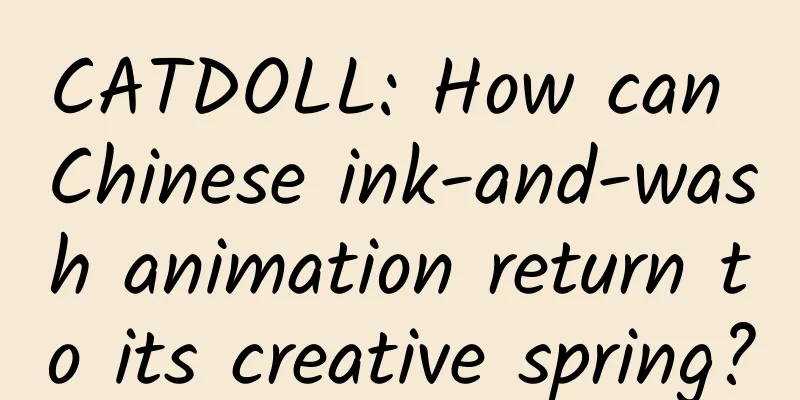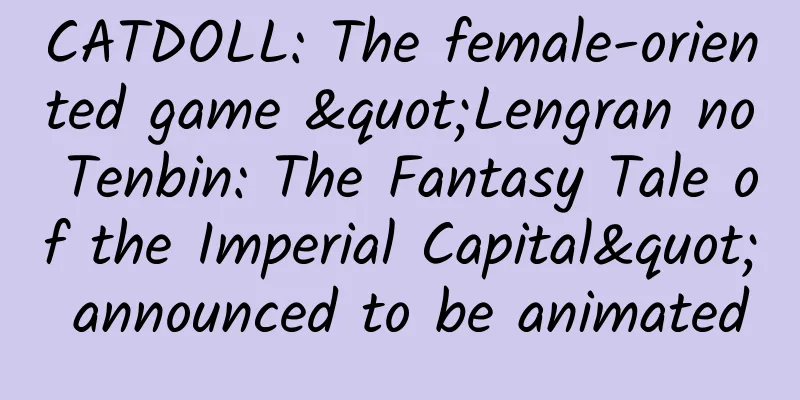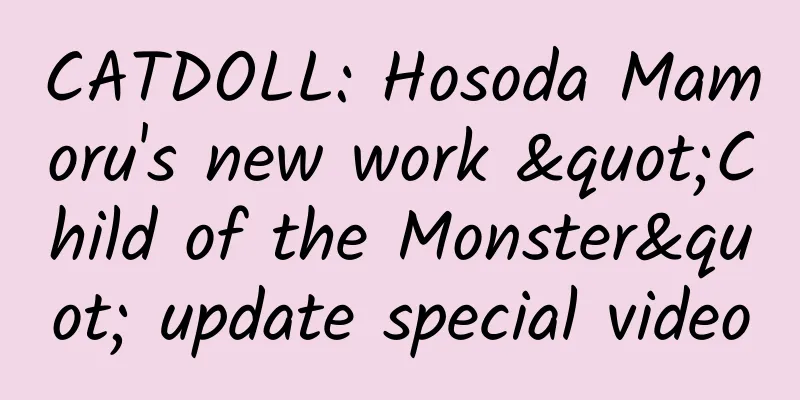CATDOLL: How can Chinese ink-and-wash animation return to its creative spring?

|
55 years ago, because of Mayor Chen Yi's words "It would be great if you could make Qi Baishi's paintings move", the staff of Shanghai Animation Film Studio created a "treasure" in Chinese animation - ink animation. With its smart and beautiful pictures and complex production process, it caused a sensation in the international film industry. However, since when, ink animation has gradually declined and disappeared in the Chinese film and television market, fading out of people's sight, just like a dot of ink submerged in water. Recently, with the arrival of spring, an ink-and-wash animation film "Landscape Love" produced 27 years ago has reappeared on the Internet, attracting hundreds of thousands of netizens. The film has won awards at the Moscow Youth Film Festival, Varna International Animation Film Festival, Montreal Film Festival, and Annecy Animation Festival in France. Now, with the passage of time, it still attracts a lot of attention. So, can Chinese ink-and-wash animation once again usher in a new spring of creation? Beautiful ink painting The first Chinese ink-and-wash animation is "The Tadpole Looking for His Mother", which may be the most beautiful childhood memory for those born in the 1970s and 1980s. The traditional Chinese ink painting technique, combined with the animation production, creates a vivid ink image with rich and vivid artistic conception, and a delicate and elegant style, which is of great aesthetic value and charm. "There is a big difference between Chinese painting and Western painting." Qian Jianping, director of the Shanghai Animation Film Studio, said, "The charm of Chinese painting itself lies in the blank space. The so-called ink painting is colorless in ink, and uses rich black and white, plus the intermediate gray, to express a kind of artistic conception." In his opinion, the reason why "Landscape Love" can re-enter the public's sight is because of the unique aesthetics of Chinese traditional culture contained in it. "Landscape" is such an advanced and even experimental animation. The photographer broke the traditional frame-by-frame shooting technique and shot the original background, then combined it with the animation lens, so that the film fully shows the layering and rhythm brought by the painter's brushwork and ink. From this 18-minute film, many people have seen the philosophy of Taoism, the free and easy, ethereal, and elegant aesthetic style, and the relationship between characters and environment is displayed by expressing emotions through scenery and blending scenes. The mountains surrounded by clouds, the water covered by mist, and the musicians like idle clouds and wild cranes, there is reality in the virtual and virtual in the real, showing a kind of sadness and vastness of the lonely incense. "How to combine art and product has always been a legacy issue. At that time, excellent painters and creative staff were able to calm down and create something together. It can be said that ink-and-wash animation is a product of the times," said Qian Jianping. High starting point and low return Dai Tielang, a senior art director at the Shanghai Shanghai Film Studio who has participated in the production of ink-and-wash animations such as The Tadpole Looking for Its Mother and Shepherd's Flute, told reporters that technically speaking, the modeling of general animated characters is done with "single-line flat painting," while ink-and-wash animations have the characteristics of Chinese folk painting—the character modeling has no edge lines, nor is it flatly painted, but rather shows the smudge effect of brush painting on rice paper. From 1961 to 1995, Shanghai Fine Arts Film Studio produced four ink-and-wash animations. In addition to the three mentioned above, there is also the equally excellent "Deer Bell". Due to the need for layered rendering and coloring, the production process of ink-and-wash animation is very complicated. A short film takes a lot of time and manpower, including many famous Chinese painters. For example, "Shepherd's Flute" was drawn according to the style of painter Li Keran. For this film, Li Keran specially drew 14 ink paintings of buffaloes and shepherds and provided them to the drawing team for reference; "Deer Bell" invited painter Cheng Shifa to serve as art design; the author of "Landscape Love" is painter Wu Shanming. The strong team that spared no expense is astonishing. However, as a form of art short film, ink-and-wash animation has a high starting point and low returns, which has led to its gradual decline in theaters. "If a film fails to excite the audience after 10 minutes, then it will be even more difficult to make the audience enthusiastic to watch it to the end if it becomes an 80-minute blockbuster." Many people in the industry share the same view as Qian Jianping. The key to succession lies in development How to use new technology to reach a level that modern people can accept and appreciate while preserving the unique artistic aesthetics of ink-and-wash animation? This is an urgent issue facing the Shanghai Animation Film Studio. "If we only pursue aesthetics, and this aesthetic is from the past, then its vitality will not last long in the present." Qian Jianping said, "We can't just copy the tradition, but we want to inherit the tradition well, and the most important thing is to develop it well." In fact, in addition to ink-and-wash animation, paper-cut animation and puppet animation, which have influenced three generations of people, are also on the verge of extinction. "The previous "Magic Brush Ma Liang", "Afanti", "The Fisher Boy" and "Pig Bajie Eats Watermelon" are really classics, but now there are almost no people making these types of films." A staff member of Shanghai Xuandong Cartoon told reporters that due to the large number of CG animations developed by Hollywood, the marketability is very high, "and it has also made the audience develop the habit of watching 3D and computer animation." In fact, the Shanghai Animation Film Studio is still paying attention to and developing ink-and-wash animations. They bought the copyright of a well-known children's novel, hired a famous painter to do the art design, and tried to combine traditional ink-and-wash painting with computer technology to adapt to the current audience's appreciation habits. "There are too many films to choose from now, and the competition is fierce. We have been in the incubation and development stage to find a reason to retain the audience." Qian Jianping said, "This requires a lot of experiments, time, and a lot of money." |
Recommend
CATDOLL: The hit Chinese version of the "Doraemon: Stand by Me" movie has attracted the attention of Japanese media. Will more works be lifted from the ban?
On May 28, the theatrical version of "Stand ...
CATDOLL: Introduction to the new show "Everyday Supernatural Battles" in October 2014
On March 11, 2014, it was announced that the seri...
CATDOLL: "I am Takamiya Konno!" TV animation decided
"I'm Takamiya Kana!" is a spin-off ...
CATDOLL: Introduction to the new show "HisCoool! Sega Girls" in October 2014
On April 10, 2014, Sega's official website an...
CATDOLL: Japanese media voted for the "Top 10 Most Tear-jerking Anime" and Anohana was still touching
Why do we like watching animation? Is it because ...
CATDOLL: The first preview of the July series "Forbidden Curse" shows a boy getting a powerful cheat
The preview image of the first episode of the ne...
CATDOLL: The new promotional PV of the animation "Ninja Slayer" is released, with a total of 26 episodes
The Ninja Slayer light novel-adapted anime "...
CATDOLL: The domestic animated film "Ten Thousand Years Later" "Fantasy Edition" trailer released, revealing the female character for the first time
China's first 18+ movie, the 3D fantasy actio...
CATDOLL: "Online game wife can't be a girl?" Beautiful supervisor participated in C91 exhibition as a COSER, photos exposed
Since the animation supervisor of "My Wife C...
CATDOLL: The Spring of Macho Men: The April new show "My Story" announced to be adapted into a live-action movie
The spring of tough guys is here! The new April s...
CATDOLL: The author of "My Teen Romantic Comedy Is Wrong, As I Expected" is digging a new hole and starting a new novel
The author of the popular light novel "My Te...
CATDOLL: The final boss of the 34th episode of the animation "Ushio and Tora" was born in this way
The 34th episode of "The Decisive Battle&quo...
CATDOLL: Japanese musician Kenichi Kurosawa passed away and composed music for "Hunter x Hunter"
Recently, another sad news came. Kenichi Kurosawa...
CATDOLL: Anime Starry Sky Evening News: A mysterious countdown to "Naruto" appears, and a strange woman removes her ribs to look like an animated character
Good evening, everyone. It's time to review t...
CATDOLL: Micro comics for love "Go Away Tumor" with a smile horizontal
Recently, a comic book published in 2012 has sudd...









